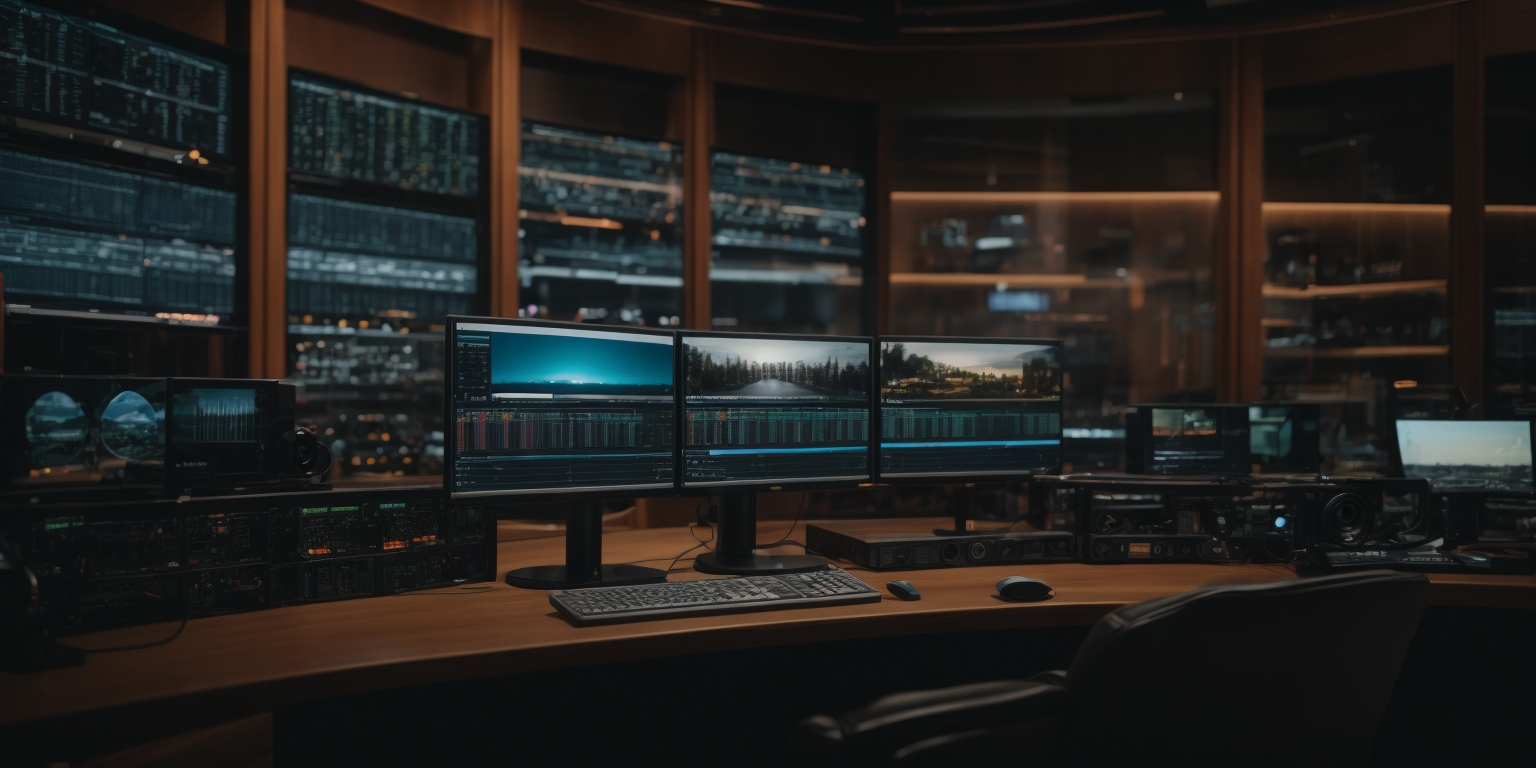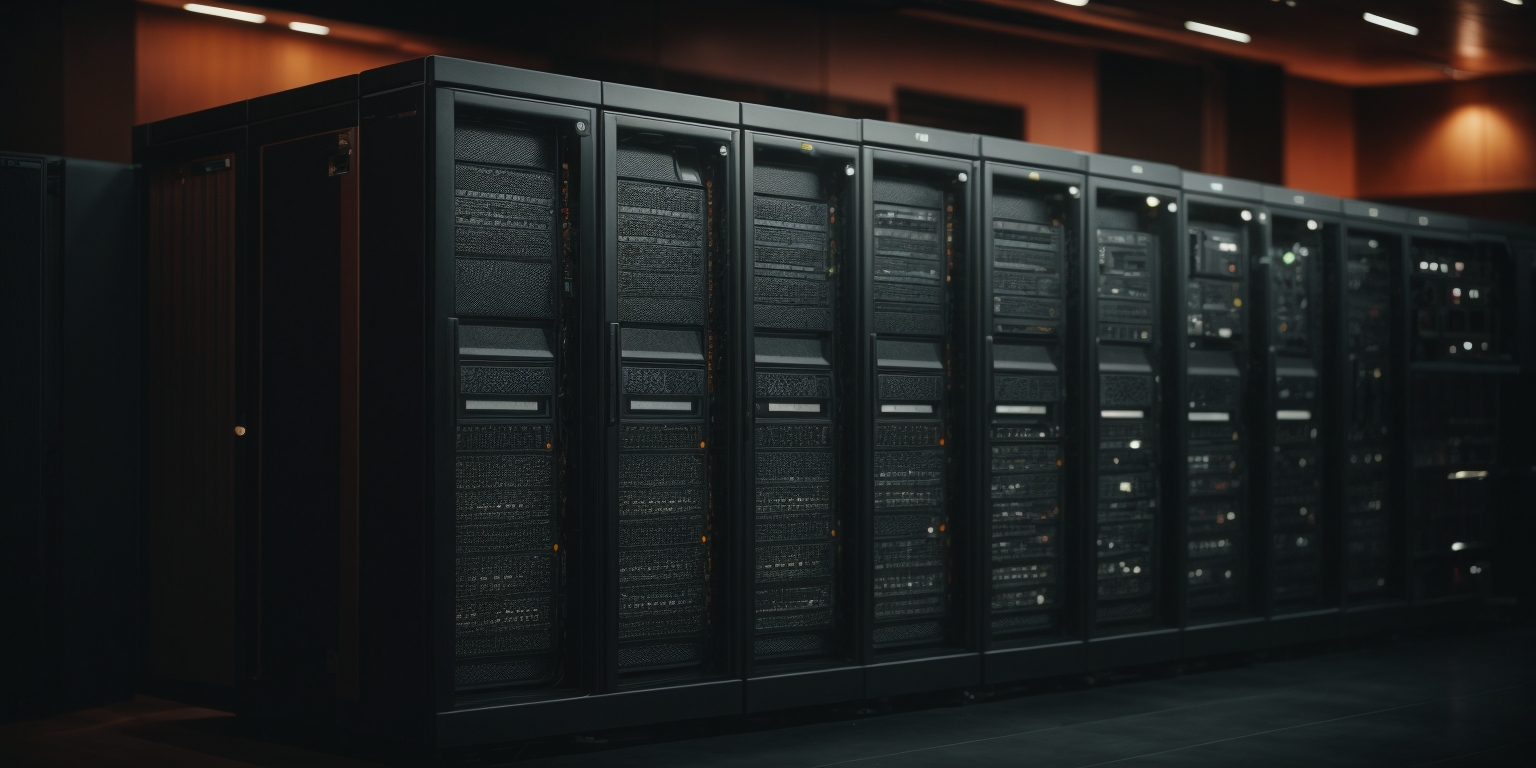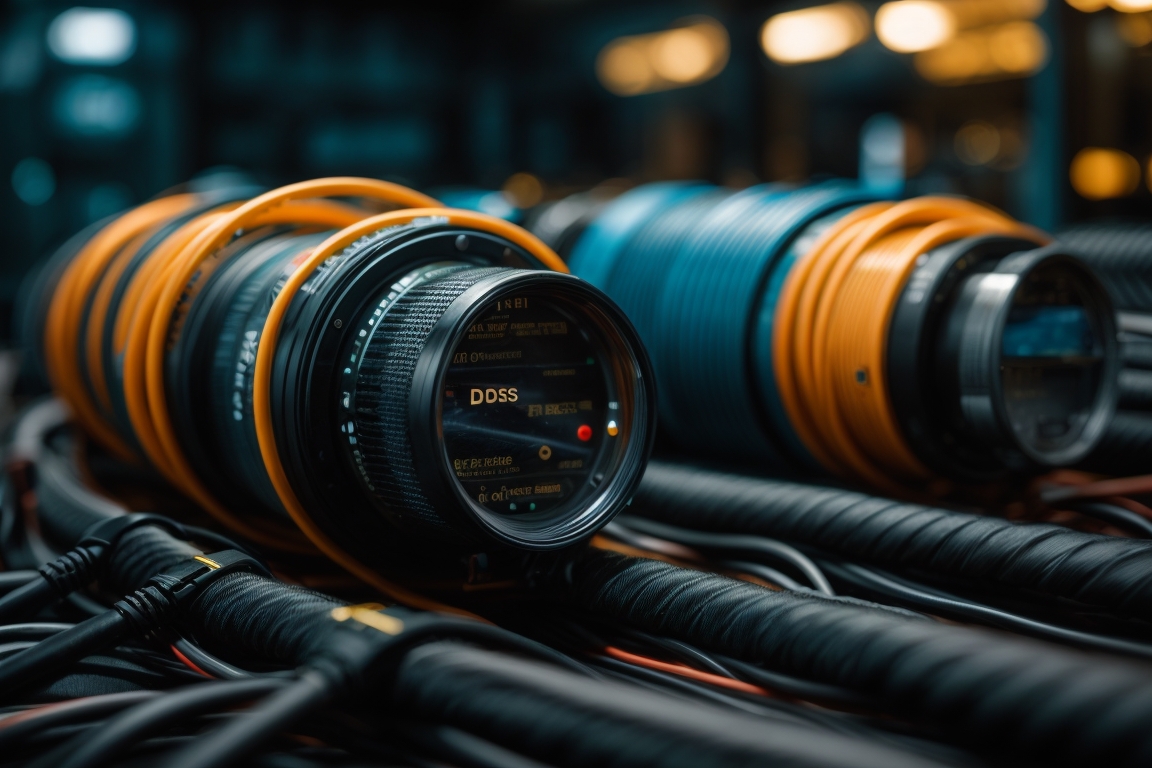
Streaming Server Solutions: Enhancing Content Delivery
Streaming servers have revolutionized content delivery, offering a seamless and immersive experience for users. However, questions arise regarding the infrastructure needed for efficient video streaming. Will a VPS suffice, considering bandwidth limits and core power? Is a dedicated server necessary for live video streaming, and should it be managed or unmanaged? What are the hardware requirements and RAM capacity for a dedicated server streaming OBS? Additionally, should one opt for an AMD or Intel server? This article explores these queries, delving into the cost-effectiveness of video CDNs versus dedicated servers and the need for an offshore server location for live video streaming. Furthermore, it provides insights on streaming music from a live streaming server and offers a step-by-step guide on installing the open-source streaming server Owncast.
Table of Contents
- Will a VPS be Enough for Video Streaming?
- Do I Need a Dedicated Server for Live Video Streaming?
- Dedicated Live Streaming Server – Managed or Unmanaged?
- Dedicated Server Streaming for OBS
- How to Build a Dedicated Web Server for Video Streaming
- How Much RAM i need for Dedicated Server Streaming OBS?
- AMD or Intel Server for Streaming?
- Hardware Requirements for a Video Streaming Server
- How Much Bandwidth Do I Need for a Video Streaming Server?
- What is Cheaper – A Video CDN or Dedicated Server for Video Streaming?
- Do I Need an Offshore Server Location for Live Video Streaming?
- Online Streaming Software
- Can I Stream Music from Live Streaming Server?
- Open Source Streaming Server Owncast: Installing
Will a VPS be Enough for Video Streaming?
🎥 Key Facts
– Video streaming requires significant server resources to deliver smooth playback.
– Virtual Private Servers (VPS) offer dedicated resources and control over server settings.
– VPS plans can vary in terms of performance, scalability, and bandwidth.
Video streaming places high demands on server resources, requiring a robust infrastructure to ensure uninterrupted playback. While a Virtual Private Server (VPS) can be a viable option, its suitability depends on various factors.
A VPS provides dedicated resources, allowing you to allocate sufficient processing power, memory, and storage for video streaming. With full control over server settings, you can optimize performance and customize configurations to meet your specific requirements.
However, not all VPS plans are created equal. To ensure smooth streaming, consider factors such as CPU power, RAM, and storage capacity offered by the VPS provider. Bandwidth is another crucial consideration, as it determines the number of concurrent viewers your server can handle.
For small-scale streaming or low-resolution videos, a VPS may suffice. However, for high-definition content or a large audience, a dedicated server or a specialized video streaming platform might be a better choice.
Do I Need a Dedicated Server for Live Video Streaming?

🎥 Live video streaming has become increasingly popular in recent years, with platforms like YouTube, Twitch, and Facebook Live allowing users to broadcast their content in real-time. If you are considering venturing into the world of live streaming, you may be wondering if you need a dedicated server to ensure a smooth and uninterrupted streaming experience.
While it is not absolutely necessary to have a dedicated server for live video streaming, it can greatly enhance the quality and reliability of your broadcasts. A dedicated server offers several advantages over shared hosting or cloud-based solutions. It provides you with exclusive access to server resources, ensuring optimal performance and minimal latency. This is crucial for delivering high-definition video and maintaining a stable connection with your viewers.
Moreover, a dedicated server allows you to have full control over your streaming environment. You can customize the server settings to meet your specific requirements and scale up resources as your audience grows. Additionally, dedicated servers offer better security measures, protecting your content from potential cyber threats.
In conclusion, while not mandatory, a dedicated server is highly recommended for live video streaming. It guarantees a seamless streaming experience, improved performance, and greater control over your broadcasts.
Dedicated Live Streaming 🖥️ Server – Managed or Unmanaged?
When it comes to live streaming, having a dedicated server is crucial for a seamless and uninterrupted experience. But the question arises: should you opt for a managed or unmanaged dedicated live streaming server?
Managed Dedicated Live Streaming Server: This option provides peace of mind as the server is fully managed by a team of experts. They handle all the technical aspects, including server setup, maintenance, and security. This allows you to focus solely on your live streaming content and audience engagement. With 24/7 support, you can rely on their expertise to troubleshoot any issues that may arise.
Managed features: 🛠️ Fully managed by experts, 🚀 Hassle-free setup and maintenance, 🔒 Enhanced security, 📞 24/7 support.
Unmanaged Dedicated Live Streaming Server: For those with technical expertise and specific requirements, an unmanaged server offers more control and customization options. You have the freedom to configure the server according to your needs. However, this also means you are responsible for server setup, maintenance, and security. Technical support may be limited or not included.
Unmanaged features: ⚙️ More control and customization, 💪 Requires technical expertise, 🛠️ Self-managed setup and maintenance, 🚫 Limited technical support.
Ultimately, the choice between managed and unmanaged dedicated live streaming servers depends on your technical skills, resources, and preferences. Consider your needs and priorities to make an informed decision that ensures a smooth and successful live streaming experience.
Dedicated Server Streaming for 🎥 OBS
Dedicated Server Streaming for OBS is a game-changer for content creators and streamers. With a dedicated server, you can enhance your streaming experience and provide your audience with top-notch quality. 🚀 Using OBS (Open Broadcaster Software) with a dedicated server allows you to offload the encoding process, ensuring smooth and uninterrupted streaming. This means you can focus on engaging with your viewers without worrying about dropped frames or laggy streams. 💯 By utilizing a dedicated server, you can also handle higher bitrates and resolutions, resulting in stunning visuals for your audience. Whether you’re streaming gameplay, live events, or creative content, a dedicated server ensures your stream is delivered flawlessly. 🎮🎥 Moreover, dedicated servers offer increased stability and reliability, minimizing the risk of crashes or downtime during your stream. This ensures that your viewers can enjoy your content without any interruptions. 💪
How to Build a Dedicated Web Server 🌐 for Video Streaming
Building a dedicated web server for video streaming requires careful planning and the right hardware. Here’s a step-by-step guide to help you get started:
1. Choose the Right Hardware: Opt for a powerful server with ample storage, high-speed processors, and sufficient RAM to handle video streaming demands.
2. Install a Reliable Operating System: Select a stable and secure operating system like Linux or Windows Server to ensure smooth server performance.
3. Set Up a Web Server Software: Install a web server software such as Apache or Nginx to handle HTTP requests and deliver video content efficiently.
4. Configure Streaming Software: Choose a streaming software like Wowza or Adobe Media Server to encode and stream your videos effectively.
5. Secure Your Server: Implement robust security measures, including firewalls, SSL certificates, and regular software updates, to protect your server from potential threats.
6. Optimize Bandwidth: Ensure sufficient bandwidth to handle multiple concurrent video streams by working with a reliable internet service provider.
7. Test and Monitor: Regularly test your server’s performance and monitor its resources to identify and resolve any issues promptly.
By following these steps, you can build a dedicated web server for video streaming that delivers high-quality content to your audience.
How Much RAM i need for Dedicated Server Streaming OBS?

When it comes to streaming with OBS on a dedicated server, the amount of RAM you need depends on several factors. RAM (Random Access Memory) is crucial for smooth streaming performance and multitasking.
For basic streaming needs, such as streaming at 720p or 1080p with a few overlays and widgets, 8GB of RAM should suffice. However, if you plan to stream at higher resolutions like 1440p or 4K, or if you want to use resource-intensive plugins or effects, 16GB or more would be recommended.
Additionally, if you intend to run other applications alongside OBS, such as video editing software or game servers, you should consider increasing the RAM accordingly. Remember, more RAM allows for better multitasking and prevents performance bottlenecks.
It’s important to note that OBS settings, encoder settings, and the complexity of your stream can also impact RAM usage. Therefore, it’s advisable to monitor your server’s RAM usage during streaming sessions and adjust accordingly.
In conclusion, for smooth streaming with OBS on a dedicated server, aim for at least 8GB of RAM, but consider upgrading to 16GB or more for higher resolutions and resource-intensive tasks.
AMD or Intel Server for Streaming?
When it comes to choosing a server for streaming, both AMD and Intel offer powerful options that cater to different needs.

🔥 AMD: Known for their high-performance processors, AMD’s server lineup includes the EPYC series. These processors are designed to handle heavy workloads and offer excellent multi-threading capabilities, making them ideal for streaming applications. With features like higher core counts and PCIe 4.0 support, AMD servers deliver exceptional performance for video encoding and streaming tasks.
💪 Intel: Intel’s Xeon processors are renowned for their reliability and stability, making them a popular choice for streaming servers. The Xeon lineup offers a wide range of options, from entry-level to high-end models, including E3 (single CPU), E5 (double CPU), allowing users to choose the right balance between performance and cost. Intel servers excel in single-threaded applications, making them suitable for tasks that require fast response times and low latency.
The main thing is to use hardware from our era, i mean servers with DDR4 / DDR5. DDR3 is acceptable too, but old servers have less CPU instructions set which can cause lags on old hardware.
Hardware Requirements for a Video Streaming Server
This depends on software you are using. For example, these are Storm Streaming Server hardware requirements. Consider these values for as a general information.
Minimal hardware requirements (250 connections / 720p)
| CPU | Single AMD/Intel 4-core 2.4 GHz |
| Memory | 8 GB |
| Network Interface | 1 Gbps NIC |
| Hard drive space | 40 GB (the server itself weights less than 50 mb) |
Recommended hardware requirements (2800 connections / 720p)
| CPU | Dual AMD/Intel 16-core 2.4 Ghz |
| Memory | 256 GB |
| Network Interface | 10 Gbps SFP+ NIC (Fiber / DAC) |
| Hard drive space | 40 GB (the server itself weights less than 50 mb) |
Remember, these hardware requirements may vary depending on the expected number of users, video quality, and streaming platform. It is advisable to consult with experts or refer to the specific recommendations provided by the video streaming software or platform you plan to use. 🖥️📹🚀
How Much Bandwidth Do I Need for a Video Streaming Server?
Bandwidth is a crucial factor to consider when setting up a video streaming server. It determines the amount of data that can be transmitted over a network connection. To ensure a smooth streaming experience for your viewers, you need sufficient bandwidth.
The required bandwidth depends on several factors, including the quality of the video, the number of concurrent viewers, and the streaming platform’s recommended settings. For example, streaming in high definition (HD) requires more bandwidth than standard definition (SD).
To estimate the required bandwidth, consider the formula: Bandwidth = (Video Bitrate x Number of Concurrent Viewers) + Overhead. The overhead accounts for additional data, such as audio and metadata.
For instance, if you have 100 viewers streaming an HD video with a bitrate of 5 Mbps, the required bandwidth would be 500 Mbps (5 Mbps x 100 viewers) + overhead.
What is Cheaper – A Video CDN or Dedicated Server for Video Streaming?

When it comes to video streaming, cost is a crucial factor to consider. Two popular options for hosting videos are a Video Content Delivery Network (CDN) and a Dedicated Server.
A Video CDN is a network of servers strategically placed around the world to deliver videos efficiently. It offers several advantages, such as faster loading times, scalability, and high-quality streaming. 🌍
On the other hand, a Dedicated Server is a physical server solely dedicated to hosting your videos. It provides complete control over resources and allows for customization. 💻
In terms of cost, a Video CDN is generally more affordable than a Dedicated Server. CDNs operate on a pay-as-you-go model, where you only pay for the bandwidth and storage you use. This makes it a cost-effective solution, especially for small to medium-sized businesses. 💰
However, if you have a large video library or require extensive customization, a Dedicated Server might be more suitable. While it may have higher upfront costs, it can be more economical in the long run for heavy video streaming needs. ⏳
Do I Need an Offshore Server Location for Live Video Streaming?
🌍 Location Matters
When it comes to live video streaming, the choice of server location plays a crucial role in ensuring a smooth and uninterrupted streaming experience for your audience. While an offshore server location may seem enticing due to its potential benefits, it may not always be necessary or advantageous.

✅ Factors to Consider
1. Geographical Reach: If your target audience is primarily located in a specific region, it is advisable to choose a server location closer to them. This reduces latency and improves streaming quality.
2. Legal Compliance: Depending on the content you stream, certain jurisdictions may have strict regulations. Ensure your server location complies with these laws to avoid legal complications.
3. Bandwidth and Infrastructure: Offshore servers may not always offer the same level of infrastructure and bandwidth as servers in more developed regions. Assess your streaming requirements and choose a server location accordingly.
⚖️ The Final Verdict
Offshore server locations often come with higher costs due to additional infrastructure and maintenance requirements. Moreover, legal regulations and licensing agreements may vary in different jurisdictions, potentially complicating matters. Assess your budget and legal obligations before deciding on an offshore server location. While an offshore server location can provide benefits like data privacy and anonymity, it is not always necessary for live video streaming. Evaluate your specific needs, target audience, and legal requirements before making a decision. Ultimately, prioritizing server quality, reliability, and proximity to your audience should be the key factors in choosing the right server location for live video streaming.
Software for Online Streaming
Here is a quick list of software, which you can use for Online Video Streaming:
Wirecast – http://www.wirecast.io/en/
vMix – https://www.vmix.com
VidBlasterX – https://www.vidblasterx.com/
OBS Studio (free) – https://obsproject.com/
Streamlabs OB – https://streamlabs.com/
FFmpeg (free, open-source) – https://ffmpeg.org/
XSplit Broadcaster – https://www.xsplit.com/broadcaster
SplitCam (free) – https://splitcam.com/
Switchboard Live – https://switchboard.live/
FFsplit (free) – https://www.ffsplit.com/
Prism Live Studio (unclear) – https://prismlive.com/en_us/
OpenShot (free, open-source) – https://www.openshot.org/
FXhome – https://fxhome.com/
Restream Studio (free plan) – https://restream.io/studio
Dacastf – https://www.dacast.com/
Can I Stream Music from Live Streaming Server?
Yes, you can stream music from a live streaming server! 🎵
Live streaming servers are designed to deliver real-time audio and video content over the internet. They provide a seamless experience for users to enjoy their favorite music without the need for downloading or storing large files on their devices.
By connecting to a live streaming server, you can access a vast library of songs and playlists from various genres and artists. Whether you prefer pop, rock, jazz, or classical music, there is something for everyone.
Streaming music from a live server offers several advantages. Firstly, it allows you to listen to your favorite tunes instantly, without any waiting time. Secondly, you can enjoy high-quality audio, ensuring an immersive and enjoyable listening experience. Additionally, live streaming servers often provide personalized recommendations and curated playlists, helping you discover new music that suits your taste.
So, if you’re looking for a convenient and hassle-free way to enjoy music, streaming from a live server is the way to go! 🎧
Open Source Streaming Server Owncast: Installing
Owncast is an open-source streaming server that allows you to easily set up your own live video streaming platform. Installing Owncast is a straightforward process that can be done in a few simple steps.
To begin, you’ll need a server or a virtual machine to host Owncast. You can choose from various hosting providers or set it up on your own hardware. Once you have your server ready, you can download the Owncast binary from the official website.
Next, you’ll need to configure Owncast by editing the config.yaml file. This file allows you to customize various settings such as stream quality, authentication, and chat integration.
After configuring Owncast, you can start the server by running the Owncast binary. You can then access your streaming platform through a web browser and begin streaming live video to your audience.
Owncast provides a user-friendly interface and supports popular streaming software such as OBS and Streamlabs OBS. It also offers features like chat moderation, viewer statistics, and automatic transcoding.
With Owncast, you have full control over your streaming platform, ensuring privacy and customization options. Start streaming with Owncast today and engage with your audience in a whole new way! 🎥🌐
Linux command for Owncast installation:
curl -s https://owncast.online/install.sh | bashConclusion
Streaming servers has revolutionized content delivery in the digital age. With the advent of high-speed internet and advanced compression algorithms, streaming has become the preferred method of consuming media. The rise of OTT platforms and live streaming has further expanded the reach and accessibility of content. As technology continues to advance, we can expect streaming servers to play an even more significant role in shaping the future of content delivery.


This article incorporates information and material from various online sources. We acknowledge and appreciate the work of all original authors, publishers, and websites. While every effort has been made to appropriately credit the source material, any unintentional oversight or omission does not constitute a copyright infringement. All trademarks, logos, and images mentioned are the property of their respective owners. If you believe that any content used in this article infringes upon your copyright, please contact us immediately for review and prompt action.
This article is intended for informational and educational purposes only and does not infringe on the rights of the copyright owners. If any copyrighted material has been used without proper credit or in violation of copyright laws, it is unintentional and we will rectify it promptly upon notification. Please note that the republishing, redistribution, or reproduction of part or all of the contents in any form is prohibited without express written permission from the author and website owner. For permissions or further inquiries, please contact us.


